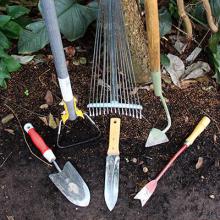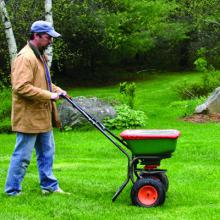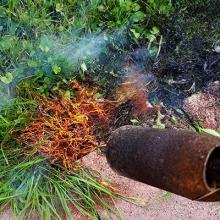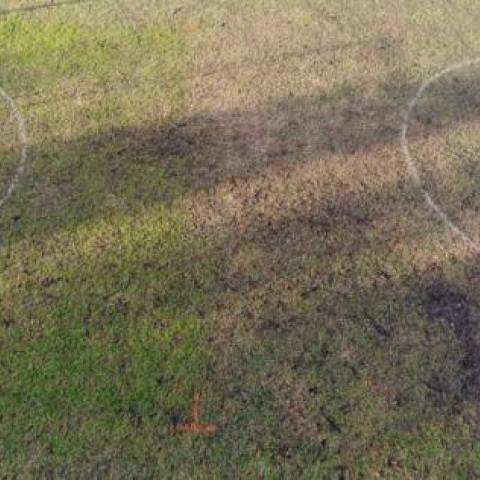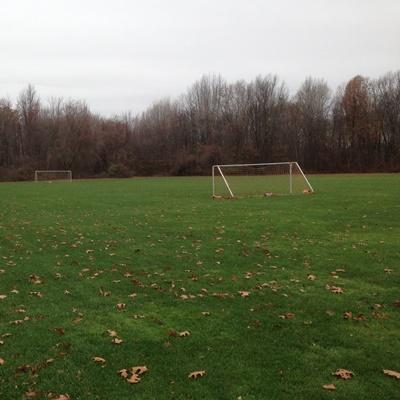
Grass species used in turf vary greatly in their tolerances for wear, salinity, shade, drought, and extreme temperature. Choosing an appropriate turfgrass species is essential to the establishment and maintenance of a healthy lawn.
Grasses are often separated into cool-season and warm-season grasses. Cool-season grasses are better adapted to cooler regions and thrive in temperatures between 65 and 75°F (18-24°C). They come out of dormancy and grow faster in spring than warm-season grasses. Their growth often slows in the peak of summer, but hastens once again in the fall. Cool-season grasses tend to be less drought tolerant.
In contrast, warm-season grasses are better adapted to warmer regions and thrive in temperatures between 80 and 95°F (26-35°C). They come out of dormancy more slowly and reach their peak growth rate in peak summer. As opposed to cool-season grasses, warm-season grasses become dormant when soil temperatures fall below 50°F (10°C) and lose their chlorophyll in dormancy.
Cool-season grasses are better adapted to the climate of New York.
For a more in-depth discussion of playing field best management practices, please visit the Cornell Sports Field Management website.
Control Options
Cultural Practices
The first defense against weeds is a healthy lawn. Weakened lawns are more vulnerable to weed establishment and proliferation. As such, many weed problems can be avoided by proper lawn care and other preventative measures.
Mowing Height
While different grass species have preferred mowing heights, mowing too low can increase weed pressure and weaken turf. Do not mow shorter than 3 inches.
Fertility and Irrigation Management
Weeds are often more competitive than their cultivated counterparts. Proper timing of fertilization and irrigation can help turfgrass thrive without benefiting weeds as much if not more than the grass. In many areas planted with cool-season grasses, warm-season grass weeds like crabgrass are often a problem. By applying fertilizer in the summer, these weeds will receive additional nutrients during their peak growth period. In these plantings:
- In New York, fertilize in early fall (September) if fertilizing once per year. If fertilizing twice a year, apply in late spring (May) and early fall (September).
- Avoid applying fertilizer to cool-season grasses in the summer. Their growth is slowed and they are often stressed during this period.
- Do not fertilize between December 1 and April 1. Remember, it is illegal in NY to fertilize during this period under the NYS Nutrient Runoff Law.
- Do not apply more than 1lb N/1000 sqft per application.
If a turfgrass area is irrigated, water established turfgrass deeply and infrequently. This promotes the development of a robust root system. Frequent light irrigation events are only needed when establishing new turfgrass.
Repetitive Overseeding
Repetitive overseeding is the repeated application of grass seed over an existing lawn or grassy area. A quick germinating species, such as perennial ryegrass, is recommended. In NY, the ideal time to start repetitive overseeding is early fall when the weather is cool and moist. By this time, summer annual weeds like crabgrass will be dying or dead.
The spread seed can germinate and establish in these bare areas. By spring, the ryegrass will be established and can crowd out new weeds. The only supplies needed are grass seed, a rotary or drop spreader, starter fertilizer, and time.
To repetitively overseed turfgrass, follow these steps:
- Acquire appropriate grass seed. Perennial ryegrass and tall fescue work well in New York though perennial ryegrass tends to germinate faster.
- Apply starter fertilizer if soil fertility is poor. Do not apply more than 1lb N/1000 sqft.
- Apply grass seed at a rate of 3-6 lbs/1000 sqft. Make 4 weekly or biweekly applications of grass seed, increasing the number of applications if conditions are dry and irrigation is unavailable.
- Do not mow shorter than 3 inches to aid with establishment.
More information: Overseeding athletic fields and lawns for ecological control of weeds
Advantages
- Does not require specialized equipment.
- Severely reduces/eliminates the need for pre-emergent herbicides.
- Can be used in pesticide-free lawn care program.
- Overseeded area can still be used.
Disadvantages
- May not eliminate perennial weeds such as dandelions or docks.
Mechanical Control
Most mechanical weeding methods are not practical in lawn or grass playing field environments. Manual removal and mowing are the primary mechanical weeding method in these environments. When manually removing weeds, pull weeds at the base of the stem. Perennial weeds with taproots are easier to remove when small. Pulling these weeds can be aided by tools such as ball weeders and root removers.
In addition being a key part of lawn maintenance, mowing is an effective weed control tactic by:
- Cutting seed heads and preventing seed rain.
- Exhausting carbohydrate reserves.
Mowing is not an effective way to prevent dandelion colonization. Though close mowing may reduce competition from some weeds, it may also damage turf, giving weeds the advantage.

